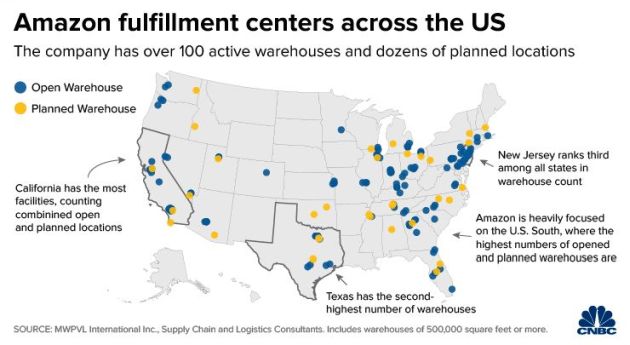Digital Marketing comprises two stages:
ATTRACT: Attract traffic to your website, app store page, and social media properties (collectively “website”).
CONVERT: Get your website visitor / app user (collectively “visitor”) to take some purchase-oriented action.
Obviously, you need to get visitors to your website before you can nudge them towards purchase. Therefore, ATTRACT precedes CONVERT, as illustrated in the following exhibit of digital marketing.
ATTRACT works by generating visibility for your product via Search Engine Marketing / PPC Ads, Search Engine Optimization, Content Marketing and other tactics described on our website here. It’s typically handled by ad agencies.
The bedrock of the CONVERT phase is Conversion Rate Optimization. CRO is the process of increasing the number of leads / deals generated from a given number of website visitors. A lead is generated when the website vistor fills out a form, signs up for a newsletter, adds an item to the shopping cart, and so on. A deal happens when s/he places the order. CRO is concerned with “lead” in B2B and “deal” in B2C. You can find the various techniques used for CRO on our website here. It’s typically handled by boutique CRO shops.
In theory, CRO is very compelling.
But, in practice, while virtually every company does digital advertising, very few companies do CRO.
Obviously, something is holding CRO back.
@s_ketharaman: CRO #ProTip: While conducting A/B test, let the chips fall where they might. Don’t prejudge what matters & what doesn’t. Exhibit A: We got a conversion uplift from 5.8% to 16.7% by changing the color of a landing page CTA button.
Going by our experience in the attract and convert phases of digital marketing, there are three factors inhibiting CRO.
Let’s get into them.
#1. PUSHBACK FROM AD AGENCIES
The raison d’être of CRO is to generate more leads / deals from the same number of visitors i.e. without spending more money on advertising to attract more visitors.
If it works, CRO will cut down ad spend. Since ad agencies are typically paid a percentage of ad spend as their fees, it follows that CRO will crimp ad agencies’ revenues.
Ergo there’s an intrinsic conflict between advertising and CRO, and ad agencies have a vested interest in downplaying CRO.
Since ATTRACT precedes CONVERT, ad agencies have the ears of the advertiser’s C Suite well before the notion of CRO enters there. As a result, they’re able to debunk CRO to client honchos. Ad agencies’ tactic tends to work more often than not since they’re way larger companies than boutique CRO shops.
This was merely a conspiracy theory in my mind until
- I saw leading PPC agencies (e.g. WordStream) dunking on CRO in public, and
- I heard from the VP Marketing of a leading advertiser that, as long as his ad agency hits his ROAS benchmark, he doesn’t care about optimizing conversion rate. For the uninitiated, Return on Advertising Spend is a quantitative measure for the incremental revenue generated by every dollar of ad spend.
As long as agencies charge % of ad spend as their fees, CRO's future will be bleak! https://t.co/aXA1X2HvMr
— Ketharaman Swaminathan (@s_ketharaman) February 24, 2016
#2. LACK OF ADJECTIVE
Every successful B2B product (and service) uses powerful adjectives to express its impact. Let’s consider the elevator pitches for some of them:
- ERP boosts efficiency of business processes by taking “inefficient” business processes and making them “efficient”.
- MA improves effectiveness of marketing by taking “ineffective” marketing operations and making them “effective”.
- CPQ bolsters agility of quotation processes by taking “sluggish” quotation processes and making them “fast”.
What does CRO do?
CRO increases website conversion rate by taking “X” websites and making them “frictionless”.
What is X?
- “Frictional”? Nah, that means something else.
- “Frictionful”? Nah, there’s no such word.
- “Difficult”? “Inconvenient”?? These are two adjectives that emerged when I consulted an MFA in Creative Writing. While they’re not wrong, CRO practitioners would agree that they’re too diffused to serve as the adjective of “friction”, which denotes the pre-CRO state of the website.
Going by this, I’m jumping to the conclusion that there’s no adjective form of the word “friction” (“frictionless” is the adjective for absence of friction).
Ergo CRO lacks the equivalent of “inefficient”, “ineffective” or “sluggish”, the three adjectives that form the bedrock of the pitches of the aforementioned B2B products / services.
This seriously impedes the ability of the CRO industry to pitch its offering, especially to attention-starved C Level Executives.
How do you describe a customer journey with a lot of friction – frictionful, frictional, non-frictionless…? Arrrgh!
Here lies the major challenge that the field of Conversion Rate Optimization must overcome: Find a suitable adjective to define the problem it’s solving. #CRO
— Ketharaman Swaminathan (@s_ketharaman) September 6, 2019
#3. PEDANTIC PRACTITIONERS
CRO practitioners tend to be pedantic.
Let’s consider the following post on LinkedIn by the founder of a CRO firm:
Sina Fak: CRO requires “good data” both before & after experimentation takes place.
In theory, there’s nothing wrong with what the OP says.
However, in practice, his take is insensitive to reality.

In the real world, no customer has pristine data. Companies are used to taking many decisions based on whatever good / bad / ugly data they have. (Even university research teams are increasingly guilty of this “drunk under lamp post” behavior, but that’s a story for another day.)
Take advertising for example, which is one of the most critical decisions taken by a company’s C-Suite.
American companies allocate upwards of $200 billion a year to TV advertising on the basis of Nielsen Ratings. For the uninitiated, Nielsen gathers raw viewership data from meters installed on 20,000 TV sets and extrapolates it to 120 million households while computing its ratings. 20000 for 120 million. That’s merely 0.02%. Data Scientists may balk at such a tiny sample size and dismiss Nielsen Ratings as statistically insignificant. But CMOs make life-and-death decisions based on them. Somehow things have worked out.
Against that backdrop, when CRO professionals keep preaching about data quality for their work that’s worth merely a few millions of dollars, they tend to tick off C Level Executives with such a pedantic attitude.
Hope @CFTC pays me 15% of the $ it makes by implementing my CRO tip! https://t.co/AgRqWedT1z
— Ketharaman Swaminathan (@s_ketharaman) March 17, 2016
These are three factors that hamper the growth of CRO.
In a follow on post, I will offer guidance on how to counter these inhibitors and elevate the appeal of CRO to the next level. Watch this space!
(Meanwhile, if readers know of any adjective for “friction”, please share in the comments below. Thanks in advance.)


